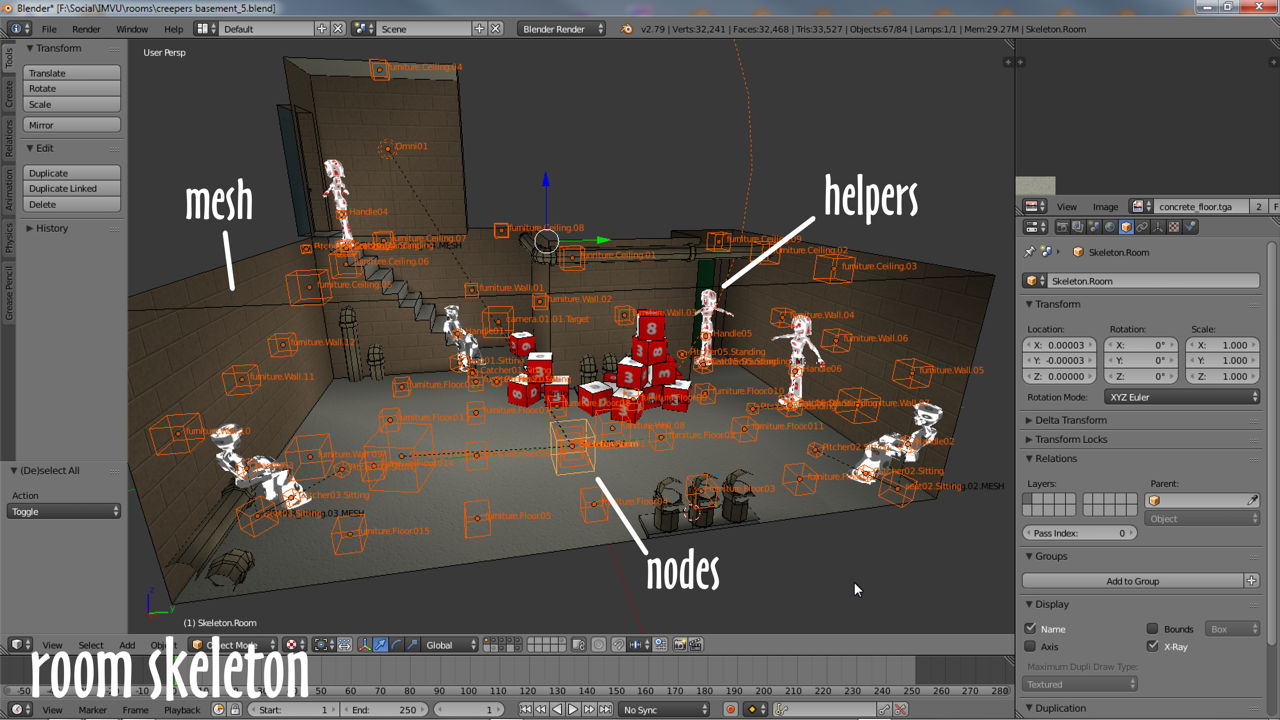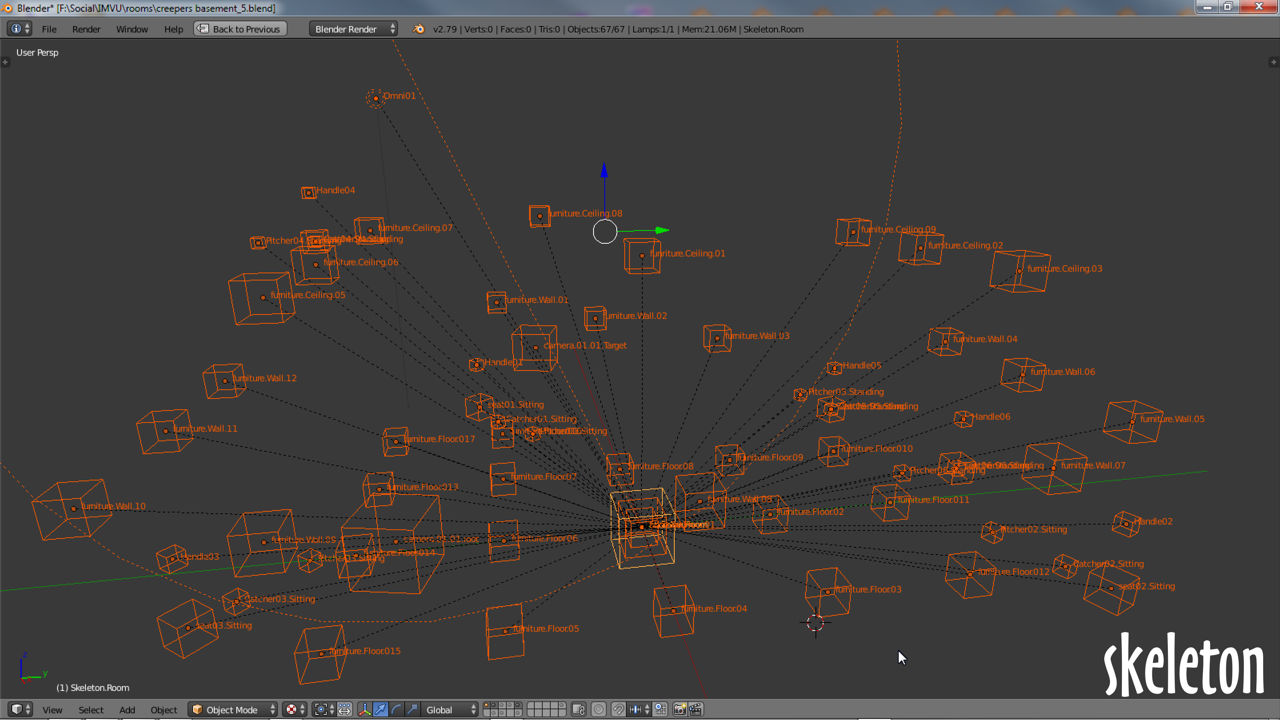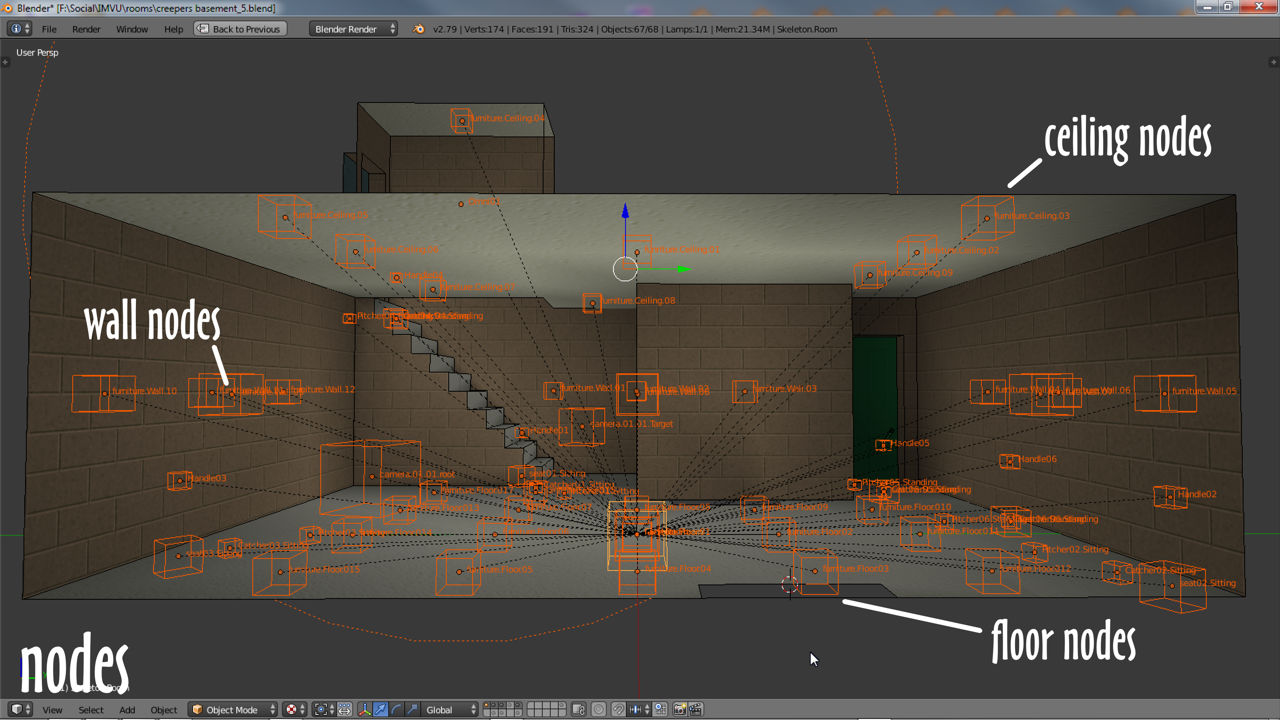In this tutorial you’ll learn about room nodes in IMVU. While this tutorial specifically references Blender, many of these steps will apply in other 3D software applications. [Download Blender FREE here.]
Room Skeleton
Being festooned with all sorts of nodes in just about every nook and cranny furniture rooms can appear quite complicated at first glance. On closer inspection their skeletons can be broken down into several sets of nodes based on what they do; a set of core nodes that define the room, furniture nodes to accommodate furniture items and seat nodes for avatar placement. How they are organised and linked together determines how the room can be used.

Room Skeleton Overview
The root or master bone of a room is Skeleton.Room, everything links to this in some way. Below this are the remaining nodes necessary for a functional room, including lights, furniture and seat nodes;
Skeleton.Room
node.Room
Omni01
camera.01.01.root
camera.01.01.root.Target
furniture.Floor.01 » 999
furniture.Wall.01 » 999
furniture.Ceiling.01 » 999
seat01.Sitting (01 » 99)
seat02.Standing (01 » 99)
seat03.Custom (01 » 99)

Node Positions
With the exception of Skeleton.Room and node.Room, which are located at grid-centre in Blender (0,0,0 on the XYZ axes), all other nodes can be placed wherever they might add functionality to a room, furniture nodes are often placed on a uniform grid for example, typically 1 metre (Unit in Blender) apart, but can be placed anywhere, on a cliff-face or under water. Similarly for avatar spots, they too could be up a cliff or under water.

Node names
As with other types of items, the names or labels given to each node is important because it determines the nodes function and individuality, especially where there are a lot in use – a wall node labeled furniture.Wall.34 distinguishes the individual node as the 34th in a group, that its a wall and not floor or ceiling node, and that its a furniture node and not a seat or other node within the rooms overall skeleton. Furniture nodes should be uniquely identified and numbered 01 through 999 (01 » 999 – an [n] value) per type, with floor nodes being labeled furniture.Floor.[n], wall nodes furniture.Wall.[n], and ceiling nodes furniture.Ceiling.[n]. For seating, both names and number follow the same pattern as used for furniture, they are functionally identical . The proper label for each node is (where [n] is a unique incremental numerical value);
Skeleton.Room node.Room Omni[n] camera.01.01.root camera.01.01.root.Target furniture.[Floor/Wall/Ceiling].[n] seat[n].[Sitting/Standing/Custom] Catcher[n].[Sitting/Standing] Pitcher[n].[Sitting/Standing] Handle[n] For more help with furniture nodes see here » [link to furniture node tute] For more help with seating see here »

